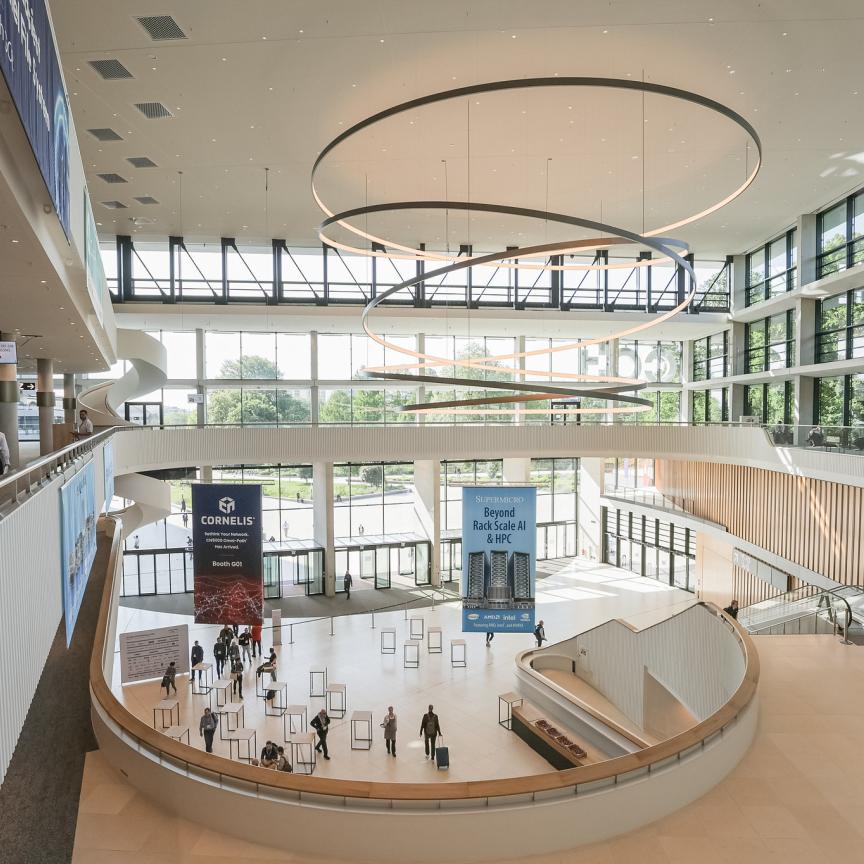The sound of the Barbiton, an ancient Greek instrument similar to the double bass, has been heard for the first time in 2,000 years, due to the power of research networking. Recreated by the ASTRA (Ancient instruments Sound/Timbre Reconstruction Application) project, using computer modelling technology and the high-bandwidth pan-European GÉANT and EUMEDCONNECT networks, the Barbiton took part in a unique inter-continental concert earlier this month as part of the GÉANT Launch Event in Stockholm, Sweden. It was joined by another ancient Greek musical instrument, the harp-like Epigonion, which was first heard again in 2008.
The ASTRA project used archaeological data as an input and then transformed it by a complex digital audio rendering technique to model the actual sound of the instrument. This advanced physical modelling synthesis creates a virtual model and visualisation of the instrument and reproduces the sound that it might have made by simulating its behaviour as a mechanical system.
ASTRA's computer modelling procedure demands enormous computing power. To achieve this it uses the advanced GÉANT and EUMEDCONNECT research networks to link high capacity computers together, sharing information across grid computing infrastructures to enable the computer-intensive modelling of musical sounds.
Accompanied by percussion, the instruments were played by the Lost Sounds Orchestra, following melodies from a musical score written by Dr Domenico Vicinanza of Dante, the organisation that operates the GÉANT and TEIN3 networks. The background music underpinning the melodies was based upon network traffic flows in the GÉANT and Asia-Pacific TEIN3 networks, converted into sound through a data sonification process developed by Dr Vicinanza, which converts seismic data into sound waves.
'Being able to hear the sound of the Barbiton, lost for many centuries, is a major step forward in our understanding and makes the past real for researchers and academics,' commented Dr Vicinanza. 'The sound waves generated by the network have an incredible power and intrinsic richness. It was a fascinating challenge to write this piece of music for a dance performance based on the data the network engineers use every day. The sound of percussions and the warm notes of the Barbiton worked perfectly with the background melody from the GÉANT and TEIN3 networks. The fact that we were providing music for a live dance performance on another continent only added to the challenge and the impact.'
The music was sent 9,300km from the venue in Stockholm across the GÉANT and TEIN3 research networks to provide music for dancers from the Arts Exchange of Asia, allowing them to perform to the music at a simultaneous event in Kuala Lumpur, the ASEM (ASIA-Europe Meeting) workshop Gala Dinner.

